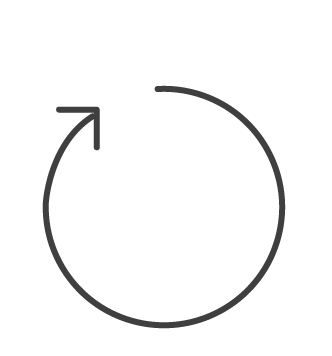FASHION MUST TAKE RESPONSIBILITY
From the day we created Maison Maes, our ambition has always been to open a new era of French leather goods, more innovative and more sustainable, as our answer to face climate change and protect the environment.
It is the main reason why we made the choice to refuse to use leather, so highly praised until now.
Here we would like to share some explanations for this choice.

IT HAS NEVER BEEN SO URGENT TO ACT
In its latest report, published in March 2023, the IPCC (an intergovernmental panel of experts on climate change hosted by the UN) draws a very frightening picture. Greenhouse gas (GHG) emissions keep increasing significantly every year, the opposite of what should be done to fight against global warming.
As it stands, it will lead to a global warming of our planet of +2.4°C to +3.5°C by the end of the century. Far, so far from the initial target of +1.5°C set by the Paris Accord in 2015. To reach it, we must start reducing our annual GHG emissions as soon as 2025 and bring them to zero by 2050.
The consequences of global warming are already visible every day with an increase of extreme weather events, accelerated disappearance of species, and severe water shortages that are already affecting half of the world population in one way or another. These events drive an increase in the number of deaths caused by heat, diseases, and food scarcity.
Fighting against climate change is not only a crucial health and environmental issue. It is also a critical social issue. We will all suffer from it, but not all at the same level. Average GHG emissions per capita in the less developed countries are about 1.7 tons per year, where they are above 9 tons per year in developed countries. The populations of the less developed countries, ironically the populations contributing the less, will be the most exposed to the impacts of global warming.
We have no other choice but to act and really start to change our habits and the way we consume if we want to reach this very important target of +1.5°C global warming, for the sake of our planet and of all mankind.
A summary of IPCC’s latest report is available HERE.

THE FASHION INDUSTRY CANNOT HIDE ANY MORE
The UN estimates at 8% the contribution of the fashion industry to global GHG emissions. The ADEME (French public agency involved in the combat against climate change and the degradation of resources) goes even further in its assessment and makes it even more tangible: with 4 billion tons per year, it is more than international flights and maritime transport altogether and compares to the emissions of France, Germany and the United Kingdom combined.
The way we consume fashion is one of the root causes of this deadly impact. Between 2000 and 2014, annual consumption of clothes has increased by 60% and consumers get rid of their clothes 2-times more often than before. If the rise of fast fashion is clearly to be finger pointed, every segment of the industry should question itself. A return to more sobriety, durable quality and timelessness is part of the solution.
When thinking about the impact of fashion on the environment, one often thinks of products manufactured in low-cost countries where social justice is at best a vague idea. But one must also and most importantly question the materials the clothes and accessories of one’s wardrobe are made of
In 2020, Global Fashion Agenda, an NGO gathering important players of the fashion industry like for instance Kering or Vestiaire Collective, published the “Climate on Fashion” study where it put forward for the first time the root causes of fashion’s carbon footprint.
As shown on the chart above, the upstream activities, raw material production, preparation, and processing, represent 71% of total GHG emissions associated with a fashion product’s lifecycle. The result is indisputable. If all industries must reduce quickly half of their global environmental impact, it is urgent for the fashion industry to work primarily on the materials used and their processing.
To read more on this, ADEME’s report is available HERE and the study published by Global Fashion Agenda is available HERE.
WE MUST RECONSIDER OUR RELATIONSHIP TO MATERIALS
If a piece of clothes, a pair of shoes or a handbag can solely have a function, the concept of “fashion” is highly linked to our emotions. The softness of silk, the comfort of a cotton fabric or the distinctive smell of a leather bag are all triggers of pleasure and emotions.
But to fight climate change, we must rethink our relationship to fashion and to find a way to combine emotions and rationality, by including the environment in our ways of thinking. Exploiting the ADEME’s databases, Carbonfact’s experts have built a comparative list of textile materials based on their impact on the environment, as displayed in the following chart.
The first observation is that animal-derived textiles fibres have a far more negative impact on the environment than plant-based fibres. One explanation to this result is that these animal-derived fibres carry a part of the impact of the livestock industry. This point has been highly debated over the years, sometimes in a very biased way, but it seems that we are finally reaching a general agreement that it should be so. It explains why, among others, sheep wool has an impact 4-times higher than cotton and why silk has an impact 3-times that of nylon or rayon.
Plant-based textile fibres all show a lower impact than animal-derived ones. But they can also be questioned sometimes. Cotton for instance is a complex topic. If originally cotton is a plant that requires little water to grow and bloom, the industrialisation of its cultivation has led to a dramatic increase in water consumption to improve volumes and profits. And as a result, there are a lot of questions around cotton, despite this fibre being widely used in fashion.
Another observation, recycling is not an option. It must be developed and widely adopted. There is a significant difference between chemical recycling, which does not necessarily yield any benefit in terms of impact, from mechanical recycling. Using the ADEME’s data, we see that mechanically-recycled textiles fibres have an impact on the environment 20% to 50% lower than their virgin counterpart.
It is fashion brands’ responsibility to help consumers to combine emotions and rationality by offering immediately fashionable products that use only the most sustainable materials. Because dividing by 3 the impact related to materials can be achieved and it means reducing immediately by 2 the total impact of any piece of clothes or accessory.
And after that, brands and all players of the fashion industry can focus on our ultimate goal: zero-impact fashion.
Read more on Carbonfact’s analysis HERE.
At Maison Maes, our handbags are already delivering a carbon footprint 3-times lower than comparable products made in leather.
To learn more, access our impact assessment HERE.

![Sac à main M1_06 noir vu de profil - MAES Paris, Haute Maroquinerie innovante & responsable [color:kaki,khaki]](http://www.maesparis.com/cdn/shop/files/maison-maes-m1_06-kaki-sac-a-main-cuir-vegetal--2-profil_29cff34d-01ae-4a19-b6d3-04c6c95c20d2_{width}x.jpg?v=1709313336)
![Sac à main M1_06 kaki vu de face - MAES Paris, Haute Maroquinerie innovante & responsable [color:kaki,khaki]](http://www.maesparis.com/cdn/shop/files/maison-maes-m1_06-kaki-sac-a-main-cuir-vegetal--1-face_2f940fd1-72c4-4f83-a2d7-b1aaffec94ef_{width}x.jpg?v=1709313336)
![Pochette avec chaine M1_02 en M_MAT_cactus noir vue de profil - MAES Paris, Haute Maroquinerie innovante & responsable [color:noir,black]](http://www.maesparis.com/cdn/shop/files/maison-maes-m1_02-noir-sac-a-main-cuir-vegetal--2-profil_{width}x.jpg?v=1709650772)
![Pochette avec chaine M1_02 en M_MAT_cactus noir vue de face - MAES Paris, Haute Maroquinerie innovante & responsable [color:noir,black]](http://www.maesparis.com/cdn/shop/files/maison-maes-m1_02-noir-sac-a-main-cuir-vegetal--1-face_{width}x.jpg?v=1709650772)
![Sac à main M1_01 carmin vu de profil - MAES Paris, Haute Maroquinerie innovante & responsable [color:carmin,carmine]](http://www.maesparis.com/cdn/shop/files/maison-maes-m1_01-carmin-sac-a-main-cuir-vegetal--2-profil_{width}x.jpg?v=1709313189)
![Sac à main M1_01 carmin vu de face - MAES Paris, Haute Maroquinerie innovante & responsable [color:carmin,carmine]](http://www.maesparis.com/cdn/shop/files/maison-maes-m1_01-carmin-sac-a-main-cuir-vegetal--1-face_{width}x.jpg?v=1709313189)
![Sac à main M1_03 camel vu de profil - MAES Paris, Haute Maroquinerie innovante & responsable [color:camel]](http://www.maesparis.com/cdn/shop/files/maison-maes-m1_03-camel-sac-a-main-cuir-vegetal--1-profil_{width}x.jpg?v=1684251847)
![Sac à main M1_03 camel vu de face - MAES Paris, Haute Maroquinerie innovante & responsable [color:camel]](http://www.maesparis.com/cdn/shop/files/maison-maes-m1_03-camel-sac-a-main-cuir-vegetal--1-face_{width}x.jpg?v=1684251847)
![Pochette M1_04 bleu nuit vue de profil - MAES Paris, Haute Maroquinerie innovante & responsable [color:bleu nuit,night blue]](http://www.maesparis.com/cdn/shop/files/maison-maes-m1_04-bleu-nuit-pochette-cuir-vegetal--2-profil_{width}x.jpg?v=1684252706)
![Pochette M1_04 bleu nuit vue de face - MAES Paris, Haute Maroquinerie innovante & responsable [color:bleu nuit,night blue]](http://www.maesparis.com/cdn/shop/files/maison-maes-m1_04-bleu-nuit-pochette-cuir-vegetal--1-face_{width}x.jpg?v=1684252706)
![Porte-cartes M1_05 camel vu de profil - MAES Paris, Haute Maroquinerie innovante & responsable [color:camel]](http://www.maesparis.com/cdn/shop/files/maison-maes-m1_05-camel-porte-cartes-cuir-vegetal--2-profil_{width}x.jpg?v=1684253446)
![Porte-cartes M1_05 camel vu de face - MAES Paris, Haute Maroquinerie innovante & responsable [color:camel]](http://www.maesparis.com/cdn/shop/files/maison-maes-m1_05-camel-porte-cartes-cuir-vegetal--1-face_{width}x.jpg?v=1684253446)


